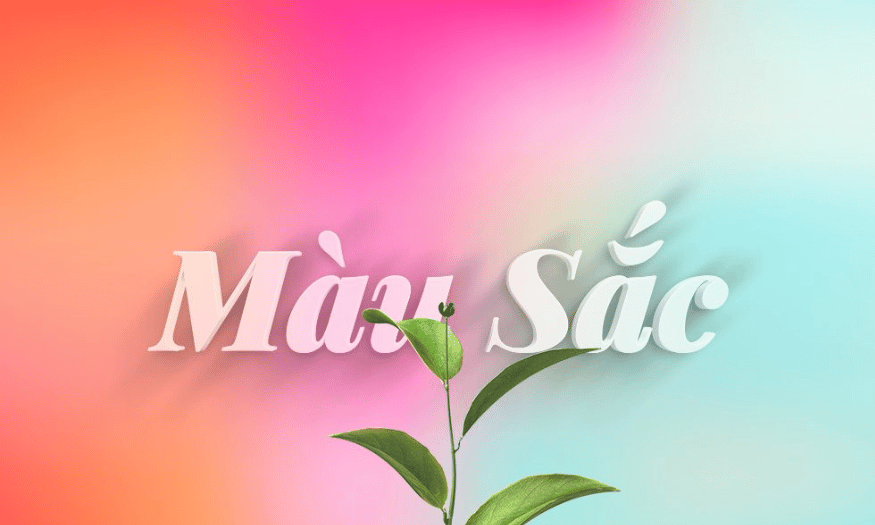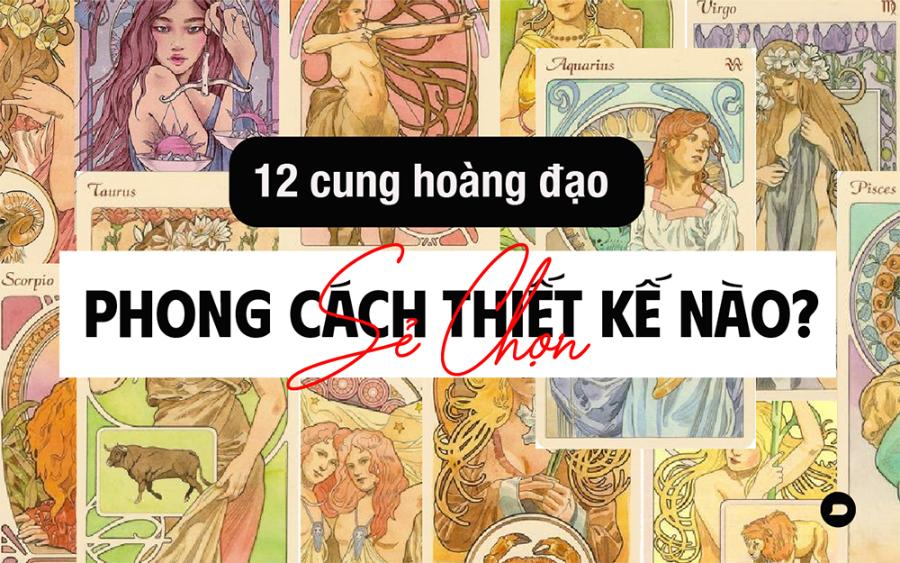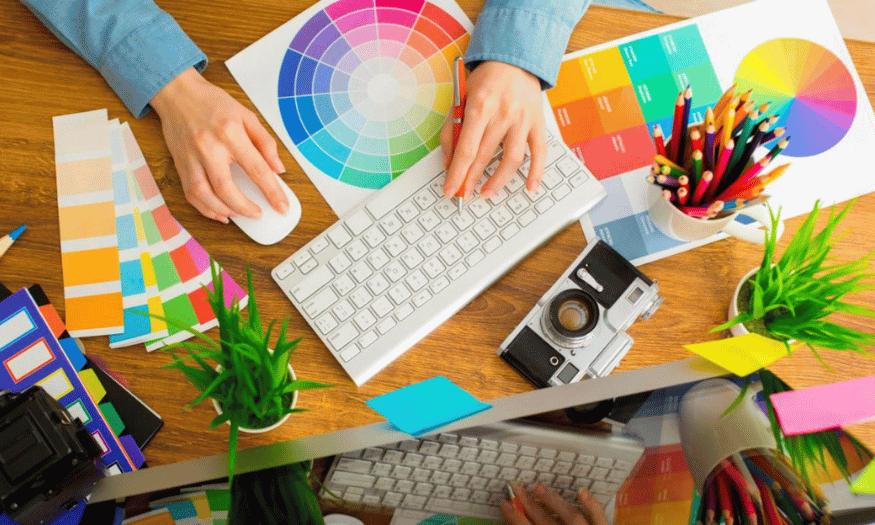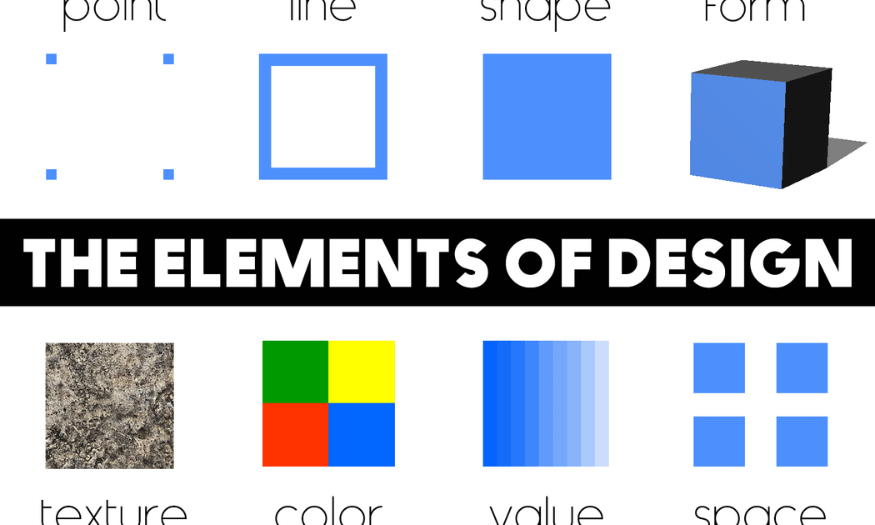Best Selling Products
Knowledge About Color Principles That Designers Need To Know
Nội dung
- 1. Explore the concepts of color
- 1.1 What is color?
- 1.2 Color properties
- 1.3 Color Wheel
- 2. Types of colors in color theory
- 2.1 Basic colors
- 2.2 Secondary colors
- 2.3 Tertiary colors
- 2.4 Color temperature
- 2.5. Neutral colors
- 3. Color combination styles in color theory
- 3.1 Monochromatic
- 3.2 Analogous
- 3.3 Complementary
- 3.4 Split-Complementary Triangle
- 3.5 Triadic type
- 3.6 Rectangular (Tetradic)
- 4. Perfect color matching software
- 5. Conclusion
Color theory is one of the most important elements in design, deeply influencing the perception and behavior of viewers. Understanding color not only helps designers create attractive products, but also helps them communicate messages more effectively. From choosing the right color palette to applying color matching principles, knowledge of color makes a big difference in creative work.

Color theory is one of the most important elements in design, deeply influencing the perception and behavior of viewers. Understanding color not only helps designers create attractive products, but also helps them convey messages more effectively. From choosing the right color palette to applying the principles of color coordination, knowledge of color will make a big difference in creative work. In this article, Sadesign will delve into the basic color principles that every designer needs to master, from color theory to practical applications in graphic, fashion, and interior design.
1. Explore the concepts of color
1.1 What is color?
Color is an indispensable part of our daily lives. For designers, color is not only a decorative element but also a powerful tool to convey emotions and messages. The perfect combination of color and layout creates a beautiful and attractive design product, attracting the attention of the viewer. The right color not only makes the design come alive but also evokes positive emotions, influencing consumer decisions and preferences.
The history of color spans thousands of years, but to this day, there is still no completely accurate definition for color. Humans, thanks to the structure of the eye and the ability to perceive, can perceive millions of different colors. These colors change constantly depending on the light and angle of view, creating a rich and diverse world of colors. In design, color not only creates attraction but also expresses style and psychology, allowing designers to convey ideas without words.
Colors are not only beautiful on the surface but also bring deep meanings. It is this magic that makes colors touch the hearts of viewers. However, colors are not always perfect or harmonious. The art of color coordination, therefore, becomes an important part of design, helping to overcome shortcomings and create balance in every work.
.png)
1.2 Color properties
Color is defined by three basic attributes: hue, intensity, and value. Each of these attributes creates the variety and richness of the color experience.
Hue is a term that describes the specific color we perceive. It answers the question, “What color is that?” Hue includes primary colors like red, blue, yellow, and their variations. Meanwhile, intensity reflects the saturation of the color, indicating how vivid or dull the color is. Finally, value refers to the lightness or darkness of the color, allowing us to create different shades by adding white or black to the base color.
In addition to the three main attributes, color can be further adjusted through tints, shades, and tones. Tints are created when a color is mixed with white, while shades come from mixing with black. Tones, on the other hand, are formed when both white and black are mixed, creating a more natural look for the color.
1.3 Color Wheel
The color wheel is a useful tool to help us better understand the relationships between colors. Built from primary, secondary, and tertiary colors, the color wheel shows how colors can work together. According to color theory, a harmonious combination occurs when two colors that are opposite each other on the color wheel are used, or when three colors form a triangle.
On the color wheel, we also distinguish between warm and cool colors . Warm colors often bring a sense of energy and liveliness, suitable for designs that need to convey joy and personality. On the contrary, cool colors evoke tranquility and peace, suitable for spaces that require relaxation and concentration. Understanding how colors work on the wheel will help designers create harmonious color schemes that are highly effective in communicating with viewers.
.png)
2. Types of colors in color theory
When exploring color theory, it all starts with the color wheel, a visual tool that helps us understand the relationships between different colors. The color wheel is more than just a circle of colors, it is the foundation for classifying and combining colors in design.
2.1 Basic colors
In traditional color theory, primary colors consist of three primary pigments: red, yellow, and blue. These are colors that cannot be created by combining any other color. All other colors are derived from these three primary colors. Therefore, they serve as the foundation for building color palettes and are the starting point for all creativity in design.
Primary colors are not only theoretical but also have practical applications in art and design. When combined properly, we can create many rich and diverse shades, thereby opening up countless creative possibilities for designers.
2.2 Secondary colors
Secondary colors are formed by mixing two primary colors. This process results in three primary colors: green, orange, and purple. Each of these secondary colors is not simply a mixture, but also possesses unique properties of the primary colors that make it up.
Mastering how to create secondary colors helps designers expand their color palettes, creating works that are richer in emotion and imagery. Secondary colors are often used to create accents and contrast in designs, making products stand out.
2.3 Tertiary colors
Tertiary colors are the result of mixing a primary color and a secondary color. Examples include yellow-orange, red-orange, red-violet, blue-violet, green, and yellow-green. These names are not just combinations, but also clearly show the relationship between the colors on the color wheel.
Tertiary colors add richness and variety to a designer's palette. They are often used to create subtle shades that add depth and dimension to design pieces.
2.4 Color temperature
In color theory, colors are also classified by temperature, which reflects how warm or cool they are. The color wheel can be divided into two halves: on the left are cool colors, starting with violet and ending with yellow-green; on the right are warm colors, starting with yellow and ending with red-violet.
2.4.1 Cool colors
Cool colors are primarily blue tones. The closer a color is to blue on the color wheel, the colder and more peaceful it feels. Cool colors are often used to create a relaxing atmosphere, suitable for designs that require calm and tranquility.
2.4.2 Warm colors
Warm colors, on the other hand, include yellow and red tones. The closer a color is to yellow on the color wheel, the warmer and more energetic it feels. Warm colors are often used in designs that need to convey energy, joy, and liveliness.
(1).png)
2.5. Neutral colors
Finally, neutrals include colors like black, white, and gray. These colors don’t really fall into the warm or cool color categories, but they can create a great balance in a design. Neutrals not only help to highlight other colors, but they also create elegant and sophisticated pieces without the need for bright colors.
The versatility of neutral colors makes it easy for designers to combine them with other colors, creating harmonious and eye-catching designs.
3. Color combination styles in color theory
When it comes to color combinations, the color wheel serves as an important guide to understanding how colors interact with each other. There are five main color combinations, each of which has a different effect on a design. Here are the basic color combinations that every designer should master.
3.1 Monochromatic
Monochromatic color is the simplest combination, using a single color (hue) but with different variations in saturation and value. By choosing a color on the wheel and adjusting the shades, you can create a rich color palette while maintaining harmony.
The appeal of this combination lies in the sense of uniformity and elegance it brings. For example, a monochromatic palette with blue tones can create a calm and professional space, while orange tones can bring warmth and dynamism. By using gradients, you can enrich your color palette and add depth to your design.
3.2 Analogous
Analogous color combinations use colors that are next to each other on the color wheel. For example, you could combine red, red-orange, and orange, or blue, green, and yellow-green. This combination creates a natural and pleasant feeling, and is often used to create a harmonious atmosphere in designs.
The beauty of this combination is that it allows you to explore the richness of the shades without losing the uniformity. You can create unique and interesting color combinations that can inspire design products such as interior decoration, fashion or graphics.
3.3 Complementary
Complementary colors are colors that are opposite each other on the color wheel, such as blue and orange or red and green. The strong contrast between complementary colors creates a striking effect that draws the viewer's attention. However, to avoid looking too harsh, you can add variation by using darker or lighter tones.
Complementary color combinations are often used in advertising and graphic design, where standout and attention are important. For example, a design using purple and yellow not only creates a strong contrast, but also feels fresh and impressive.
.png)
3.4 Split-Complementary Triangle
The triadic color scheme uses one primary color and two colors next to its complementary color. This combination creates contrast without being too strong, while also opening up more color options for the design.
This combination is suitable for those who want to experiment with multiple colors without losing harmony. By using two complementary colors, you can create rich and interesting compositions, bringing depth to your designs.
3.5 Triadic type
Triadic combinations use three colors that are evenly spaced on the color wheel, forming an equilateral triangle. This type of combination often produces a bright and dynamic effect, especially when using primary or secondary colors.
To use this combination effectively, you need to be careful with the saturation and value of the colors. By balancing light and dark colors, you can create a design that is both eye-catching and harmonious, perfect for products that need to stand out, such as advertisements or book covers.
3.6 Rectangular (Tetradic)
A rectangle combination uses two complementary color pairs, forming a rectangle on the color wheel. This combination allows you to play with more colors, but also requires you to choose a dominant color to serve as a base for the rest.
This combination often adds richness and variety to a design, but you need to pay attention to the balance so that it doesn’t become too confusing. When used correctly, this combination can create vibrant and impressive wo.png) rks of art.
rks of art.
4. Perfect color matching software
Photoshop is one of the leading graphic design software, widely used by designers around the world. With a rich set of tools and flexible features, Photoshop allows users to easily create impressive color palettes and professional color combinations. From using the color wheel to adjusting tools for hue, saturation and brightness, Photoshop provides maximum support for creativity and realizing design ideas.
However, to optimize workflow and improve design efficiency, designers should consider upgrading to the latest version of the software. Improvements in new versions often include additional features, a more user-friendly interface, and better integration with other tools. In particular, features such as Artificial Intelligence (AI) in Photoshop help automate many processes, from color selection to creating effects, saving users time and effort. Contact Sadesign now to upgrade at a preferential price today.
5. Conclusion
In short, mastering color theory is not only a necessary skill but also an art in the field of design. Understanding color can help designers not only improve the quality of products but also create unique visual experiences for users. By applying the principles of color coordination and understanding the impact of color on human psychology, designers can create works that are both attractive and meaningful. Always remember that color is not simply an aesthetic choice, but also a powerful communication language in the world of design.












































